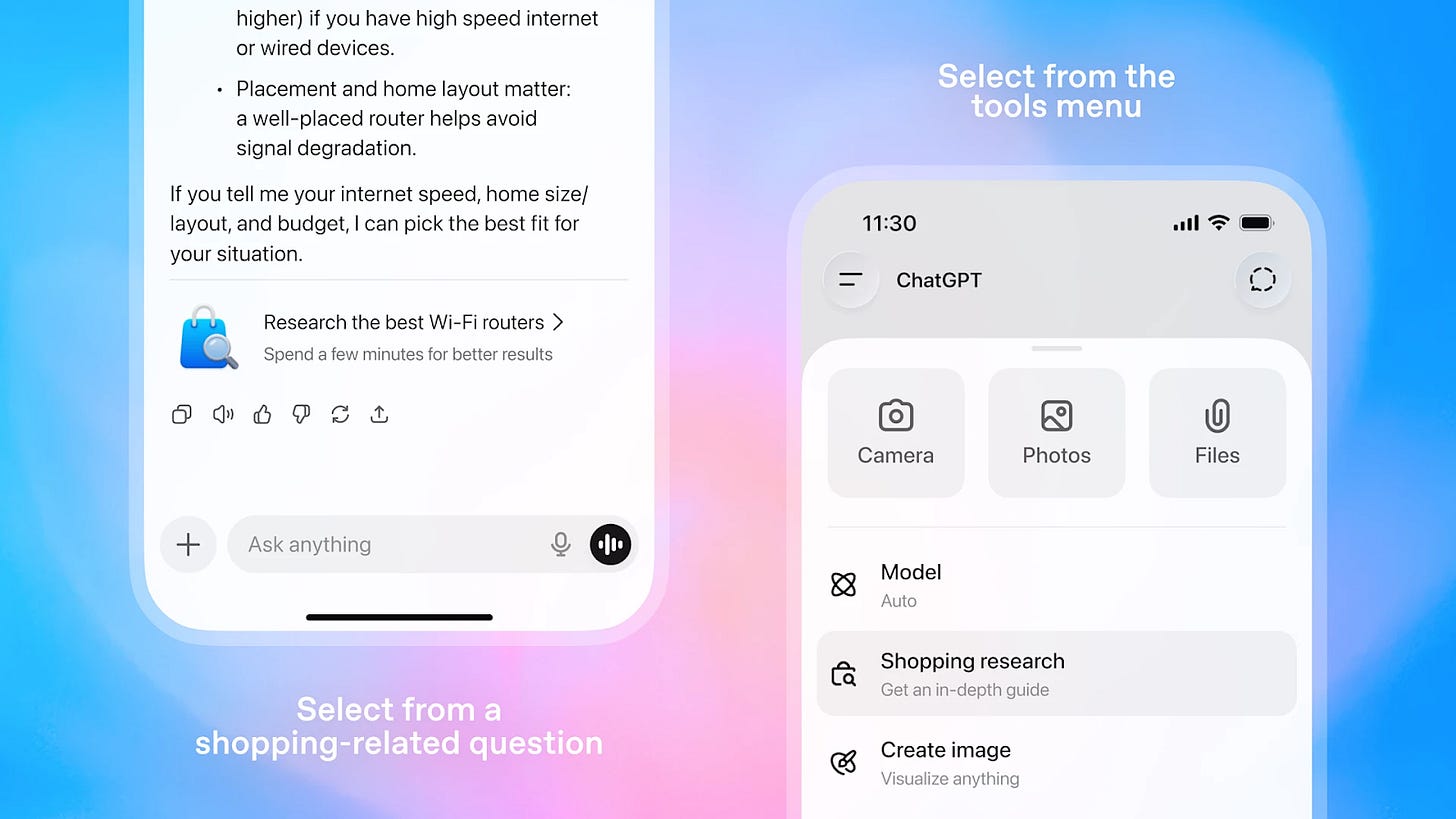The Other Side of CAC
💸 Quiet growth levers hiding in plain sight, Holiday search just shifted again, and more!
Howdy Readers 🥰
In this newsletter, you’ll find:
💸 The Other Side of CAC
🔍 Optmyzr vs OpenAI: Holiday Performance Shift
🏆 Ad of the Day
If you’re new to ScaleUP then a hearty welcome to you, you’ve reached the right place along with 50k+ CEOs, CMOS, and marketers. Let’s get into it, shall we? Oh! Before you forget, if someone forwarded this newsletter to you, don't forget to subscribe to our newsletter so you never miss out!
Together with Cloudways
Tired of Slow Hosting? Your BFCM Scaling Secret is Here.
Stop letting frustrating server management and unreliable performance sabotage your agency or freelance projects. Cloudways is a managed cloud hosting platform designed for marketers, freelancers, and agencies that need to scale effortlessly.
They handle the complex stuff. Built for serious performance and backed by 24/7 expert support, Cloudways handles everything from lightning-fast page loading to complex server maintenance, letting you focus on what matters most: landing clients and launching winning campaigns.
The Deal is Simple: Get 50% OFF for 3 Months plus 50 Free Migrations. Whether you’re running PHP, WordPress, Magento, or Laravel, their smallest server starts at just $7!
Use Coupon Code: BFCM5050
Click to Claim Your Deal Before It’s Gone!
💸 The Other Side of CAC
Everyone’s fighting for cheaper CAC. But great operators know the real unlock isn’t always on Meta or Google, it’s inside the business.
When acquisition costs spike and ad fatigue sets in, brands that win are the ones with alternative monetization systems already humming in the background. These revenue layers don’t require a new campaign; they require better use of what you already have. If you’re building for Q4 and Q1 with ad-first thinking, here’s what you’re missing:
1. Reorders, Not Just Retention, But a Campaign System
Reorders are often treated as passive LTV. But smart teams build structured reorder systems the way they build acquisition funnels.
Map SKU-level reorder timelines, build flows around consumption curves, and inject personalized triggers via SMS and packaging. One top-20 beauty brand saw a 19% increase in 60-day LTV just by aligning post-purchase flow timing to product depletion windows.
2. CX as a Revenue Channel
Customer support isn’t just a retention lever, it’s a revenue channel disguised as overhead.
Well-built macros and CX scripts can flip complaints into product swaps, upsells, or reactivation moments. “I’ll issue that refund, but would you like to try this instead?” is a proven path to winbacks. But it only works if your support queue is clean and not drowning in fraud, abuse, or fake tickets.
This is where Chargeflow adds real lift:
By automatically filtering out dispute-related noise and friendly fraud, it lets your CX team focus on real customers.
🛡 Use code BFCM10K to claim $10,000 in free chargeback automation this holiday season. Claim the $10K Offer
3. Content That Converts, Not Just Educates
Most content in DTC is built for SEO or retention, but not conversion. The best brands build pre-purchase guides, post-purchase upsell logic, and PDP-layered assets that drive the next logical purchase.
Think:
“What to gift based on skin type” (drives bundles)
“How to pick your second order” (accelerates reorder curve)
“Best ways to use X” (deflects churn)
These pages aren’t content. They’re monetization logic.
4. SKU Placement as Revenue Intelligence
Your catalog is a profit system if it’s built right.
High-margin “gateway SKUs,” strategic bundles to offload slow inventory, and reorder-driven merchandising sequences all matter more than traffic when demand softens. Smart operators reorganize PDPs and hero products weekly based on inventory velocity, not aesthetic preference.
The takeaway:
The media drives awareness. But these levers drive profitability. Revenue systems that don’t rely on ads make your business more resilient, more efficient, and easier to scale. And they start with ops, not budget.
🔍 Optmyzr vs OpenAI: Holiday Performance Shift
Smart Bidding’s BFCM behavior and OpenAI’s new shopping research both reshape how consumers convert and how advertisers optimize. Optmyzr’s findings challenge long-held bidding habits while ChatGPT introduces a fresh discovery layer.
The Breakdown:
1. ChatGPT Shopping Guides - ChatGPT’s new shopping research engine reaches 52% product-match accuracy versus 37% from ChatGPT Search, showing stronger constraint handling. Users receive multi-step buyer guides built from specs, reviews, pricing, and availability.
2. OpenAI Allowlisting - Merchants wanting visibility in ChatGPT shopping must complete the official allowlisting process, ensuring product eligibility. This governs which SKUs appear in buyer guides, creating a new upstream discovery layer. Early adoption gives brands a stronger influence over comparison workflows.
3. Smart Bidding Response – Smart Bidding handled BFCM surges independently with conversion lifts of 17.5 percent in 2022, 11.9 percent in 2023, and 7.5 percent in 2024, showing manual seasonality inputs were unnecessary and often counterproductive.
4. Cost and ROAS Impact – Seasonality adjustments doubled CPC inflation to roughly 34% yearly versus 17% without adjustments, causing ROAS drops up to 15.7 % because predicted conversion lifts rarely matched real performance.
The takeaway is simple: seasonality adjustments reduce efficiency during predictable spikes, and ChatGPT now influences early shopping decisions, meaning marketers must rely on disciplined bidding and AI-optimized product data this holiday season.
🏆 Ad of the Day
What Works:
1. The headline anchors savings to self-improvement, not price - “Stock up & Save” is a classic reward framing move, making bulk purchasing feel virtuous, not indulgent. The line connects the discount directly to “protein goals,” transforming a sale into a self-optimization decision.
2. The reviewer becomes a proxy identity the viewer wants to borrow = Showing “Matt H., Verified Reviewer” with a 5-star score activates social calibration; we subconsciously adjust our expectations to match someone performing the goal we desire. His excitement (“SO PUMPED!!!”) invites emotional contagion, letting viewers internalize success as if it’s already theirs.
3. MyFitnessPal screenshot is a behavioral proof, not information - The macro dashboard reduces the abstract idea of “high protein” into a tangible, gamified scoreboard. The rings and numbers work like mini-achievement badges, triggering a sense of measurable progress that nutrition shoppers crave.
The ad works because it collapses aspiration, proof, identity, and progress into one tight narrative where the consumer sees the version of themselves they want to become, and the product quietly slips in as the missing step in that transformation.
Advertise with Us
Wanna put out your message in front of over 50,000 best marketers and decision makers?
We are concerned about everything DTC and its winning strategies. If you liked what you read, why not join the 50k+ marketers from 13k+ DTC brands who have already subscribed? Just follow this.
At ScaleUP, we care about our readers and want to provide the best possible experience. That's why we always look for ways to improve our content and connect with our audience. If you'd like to stay in touch, be sure to follow us EVERYWHERE🥰
Thanks for your support :) We'll be back again with more such content 🥳




